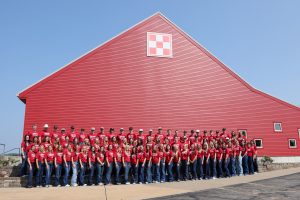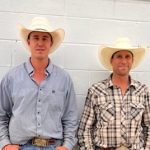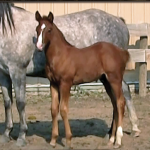Mastering the Paddock Between Your Ears: Speaker on Rotational Grazing Discussion Panel Cover Hindrances to Implementation
It wasn’t fencing, water, or public land regulations as perhaps anticipated. Instead, three
experts on a “rotational” grazing panel agreed that a paradigm shift or mindset change is
the largest hindrance to implementing an intensified grazing management plan.
During a livestreamed, virtual discussion organized and hosted by Good Grazing Makes
Cent$, ranchers from California, Montana, and Texas shared their expertise and outlook on
“Solving the Number One Hindrance to Intensive Grazing.”
“The overall tendency of people to not want to change, I’ve heard of it described as the
biggest challenge is the paddock between your ears,” Roger Indreland, owner and operator
of Indreland Angus near Big Timber, Montana, said.
Dan Macon, UCCE Livestock and Natural Resources Advisor from California, agreed, noting
that some who do start often fall back to the way “it was always done before.”
“In the people I work with, paradigms are the biggest obstacle. If your paradigm is that this
is too much work, the first wreck you have will confirm that it’s too much work and you’ll go
back to what you were doing,” Macon said. “That’s a challenge that’s more difficult to
overcome than infrastructure or finding labor.”
Emry Birdwell, a Texas rancher who has been practicing what he refers to as “time
managed grazing” since the eighties could testify to that. He noted “going broke several
times trying.” But as he learned the trade and “played the game” of staying ahead of grass,
he has been able to double and even triple his carrying capacity on the Birdwell & Clark
Ranch.
“Everybody thought I was crazy, and a lot of them are still right,” Birdwell said. “They’re the
ones that probably kept me in longer than anybody else, the ones that said I couldn’t do it,
so I stayed in.”
Each operator started their unique definitions of “rotational grazing” for different reasons,
and with different approaches. And while their goals may vary some, they did each find
that many of the benefits they experienced were the same.
On the Indreland Ranch, what they refer to as “cell grazing” was implemented in an effort to
increase utilization and production to ultimately stockpile dormant season forage and cut
costs of running a cow through a Montana winter. While his carefully curated Black Angus
genetics focused on efficient, low-input cows, certainly play a role, when coupled with his
managed grazing they can go through many winters with little to no supplement – boosting
his bottom line due to fewer inputs.
“We try to graze cattle year-round as much as possible, we do feed some hay when we get
winter storms,” Indreland said. “We can only accomplish that with our mature cows, the
young cattle do need more supplementation during the winter. And we also will help if
we’re on introduced grasses, but they’re still getting most of their energy component
through the grass.”
Macon has a much different model, in which he utilizes sheep to target graze for clientele in
California. In what he calls “management intensive grazing,” he uses the small ruminants
to target specific plant species, reduce fire fuel loads, or meet the specific unique needs of
his clients. He saw this business model and the carefully managed grazing technique as a
way to serve a need in a region that otherwise may not benefit from livestock impact. And
doing so, he has seen a major improvement on the range.
“You can have a diversity of impact on the ground,” Macon said of included small
ruminants in grazing practices. “You can improve the ecological function much more
quickly, it seems.”
Birdwell has also diversified his operation to include sheep and agreed that “it’s been
amazing what the sheep have done to the quality of the ground they’ve grazed on.” Having
come from mainly leased operations and hoping to multiply what he could produce on the
land they could purchase, he studied Allen Savory’s techniques and has since notably increased
both the number of cattle and sheep he can run.
“Savory came out, and I was just living on lease land all my life, my family was too, we
didn’t own anything,” Birdwell explained. “He said ‘you can double what you’re doing if you
do what I say.’ And it took some learning on my part to make that happen, but it was true
and we have doubled and tripled and done more doing that, but it’s a hard game to play, but
I enjoy playing it.”
While the three ranchers are practicing varying levels of rotational grazing and started down
the path with different objectives, they each ultimately saw it as an opportunity to increase
the bottom line of their business models through increased utilization of the range. And
being some of the most dedicated stewards of the land, each rancher also enjoyed the
benefits to the range and the wildlife around them and consider that a measurement of
success year to year.
“If we can be increasing our organic matter, we’re increasing our water holding capacity
and our infiltration ability to capture and store precipitation,” Indreland said. “The other
thing, long term, is we do want to see more predators, more coyotes, fox, mice – more of
everything. We’ve had some beaver come back into some areas, and also sharp-tailed
grouse come back that we didn’t see 15 years ago, so I think those might be the better
longer-term indicators – if they like it, I love it.”
Macon agreed, noting that diversity is one of measures of success as well.
“I look at diversity, both of the plant and the animal life on a place,” Macon said. “I think the
diversity of wildlife tells you kind of what you’re doing with the primary productivity of the
place and that’s important.”
With years of experience under their belts, the three were quick to admit the changes did
not come without mistakes or even “wrecks.” But when asked what advice they would give
to producers hoping to make similar changes, they each encouraged them to expect those
mishaps, learn from them, and have the courage to keep learning at a scale that is
practical.
“I’ve seen people go in in too big of a way and the education curve is so steep they can’t
stand it,” Indreland said. “So, start at a level you can afford to fail. That’s what we did, we
did a little bit and learned a lot and that’s a good way to approach it. Then, keep a mentality
that you are going to persist in spite of failures. By doing it at a small scale, it makes it a lot
easier than having it be a big wreck.”
To learn more about each operation, their techniques and practices, and garner some
practical advice, watch the full panel at https://youtu.be/TjWy_40BNbQ. Be sure to follow
Good Grazing Makes Cent$ on social media for more clips and excerpts and become a
member for access to exclusive benefits like monthly newsletters and “on-call” range
consultants for questions. Learn more at goodgrazing.org.
-Society for Range Management





